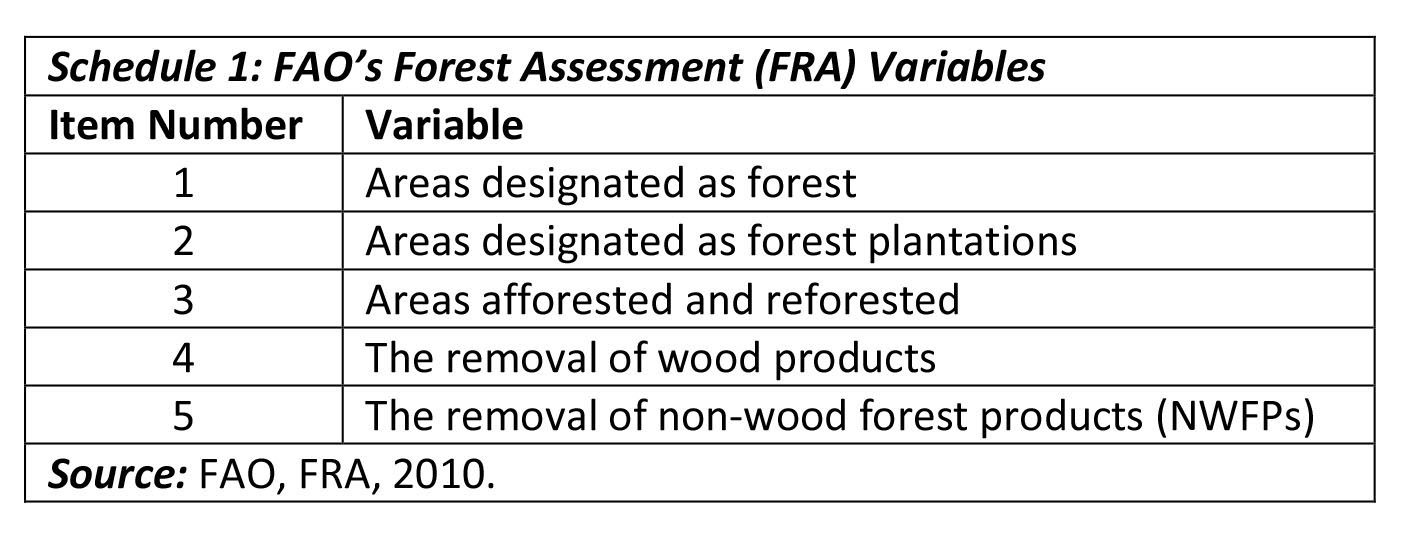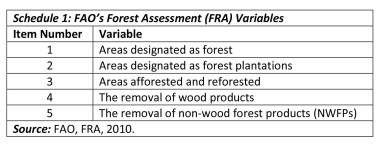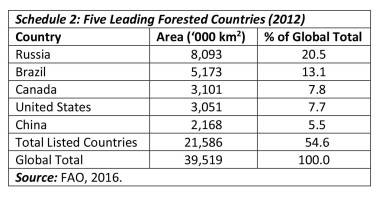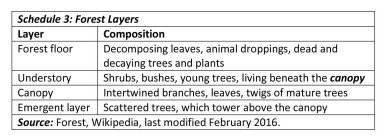Introduction
As indicated, the coming presentations on the forest sub-sector (a strategic segment of the non-mineral extractive sector) utilize the FAO’s definition of the forest. Further, whenever information is available from multiple sources, FAO’s will be relied on, if available. To recall, these columns treat the extractive sector as containing both mineral and non-mineral industries. This has not been universal practice, but I believe it is useful to work from this broader notion in Guyana. Of course, several other countries do the same, with a few even treating the non-mineral extractive industries as their main area of focus.

FAO assessment
The range of items captured in Items 4 and 5 of the Schedule is considerable. Similar to Guyana’s situation, the forest products include timber, fuelwood, a wide variety of plant and animal foods, medicines, tourism, recreation locations, and so on. Globally, by quantity, the FAO has found that industrial roundwood and woodfuel are most significant for Item 4 in the Schedule, and for Item 5, food and fodder.
Schedule 2 indicates useful information on the five largest country locations of forest, and compare these to the global total, for 2012. The Schedule reveals the five largest locations account for 21,586 (thousand km2) of forest; which is about 55 per cent of the global total (estimated at 39,519 (thousand km2)). The percentage distribution by country show that, one-fifth of the global forest is located in Russia, (20.5 per cent); 13.1 per cent in Brazil; and, in Canada and the USA 7.8 and 7.7 per cent respectively. The fifth largest forested country is China with 5.5 per cent of the total. In next week’s column, we shall observe that, Guyana’s forest is a tiny fraction of the global total.
Dominant ecosystem
The global forests are widely distributed across different latitudes, and altogether, represent “the dominant terrestrial ecosystem of Earth”. Presently, scientists estimate forests account for “75 per cent of the gross primary productivity of the Earth’s biosphere, and contain 80 per cent of the Earth’s plant biomass.” The variety of forest-types therefore, is large, and, as we shall indicate, Guyana’s forest falls mostly in the tropical rainforest.
Similar to Guyana’s, the world’s forests have been classified into two broad components; namely, the living parts (termed biotic) and the non-living parts (termed abiotic). The living parts (biotic) include trees, algae, fungi, plants, shrubs, vines, grasses, masses, insects, mammals, birds, reptiles, micro-organisms, a range of animals and so on. The non-living parts (abiotic) refer to the soil, water, minerals and so on. These biotic and abiotic components continuously interact with each other.
As a non-specialist I have found it useful to keep in mind that forests are made up of several layers. And, in tropical rainforests (Guyana), there are four such layers, as displayed in Schedule 3. Each layer has its own typical set of plants, other vegetation, and animals, all of which depend on the availability of sunlight, moisture, nutrients, and so on. The forest floor provides nutrients for the trees and also supports ferns, grasses, seedlings, as well as a range of insects and animals. The understory, which houses the shrubs, bushes and so on is made up of plants adapted to living in the shade of the canopy. The canopy, which is formed by the intertwining of branches, leaves of mature trees, receive the most sunlight in the forest and is considered to be the most productive part of its trees.
Finally, the emergent layer exists in tropical rainforest and represents a small number of trees that are seeking to emerge above the canopy.
Conclusion
In conclusion, readers may be surprised to learn that FAO estimates there are as many as 3 trillion trees worldwide. Of these 1.4 trillion, (less than one-half) can be found in the tropics and sub-tropics; 0.6 trillion in the temperate zones; and, 0.7 trillion in the sub-Artic coniferous zones. Furthermore, while as revealed last week, there are in use today over 800 definitions of what a forest is, there are also different classifications of forest systems proposed by analysts, which, as of now, forest specialists claim: “none has gained universal acceptance!”
The above ambiguities as regards 1) what constitutes a forest, and 2) how to classify forests, pose a very treacherous terrain, on which these columns about Guyana’s forest will have to tread, going forward.









